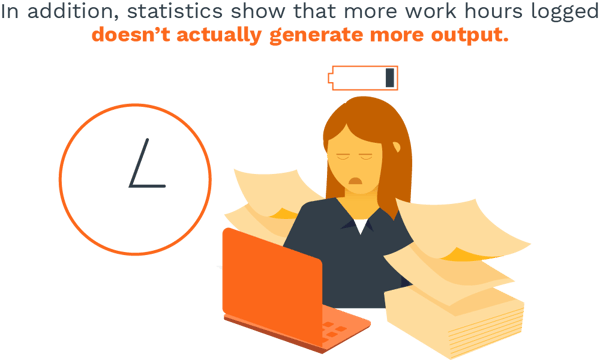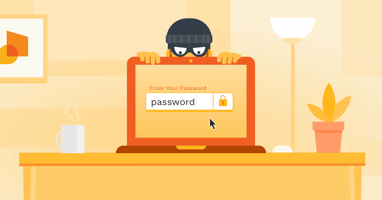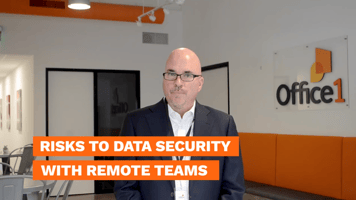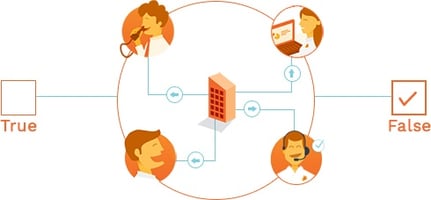Sure, everyone wastes a little time at work here and there, even you! But just how much time is “a little”? A recent study says that more than 70% of employees waste hours allotted for work on non-work related activities, spending anything from thirty minutes to half the workday distracted. We live in an age of constant connectivity, which presents as many problems as it does solutions. Your employees likely need all-day access to the internet in order to complete work-related tasks. Unfortunately, that 24/7 connection opens the door to a myriad of distractions that are just a click away.

The most common time-wasting culprits were identified as coworker visits and gossip, surfing the web, social media, texting and calling, and unnecessary meetings. The temptation of these distractions and the satisfaction that comes with them can be irresistible. Everyone has their reasons for wasting time; perhaps they don’t feel challenged, don’t see an incentive to work harder, don’t find their work gratifying, or simply don’t have enough work to keep them busy. These time-wasting habits can easily become ingrained in employees’ habits without you noticing, slowly impacting long-term productivity. With a few minor alterations to the operation of your business, you can reverse this process, helping your employees spend less time around the watercooler and more time approaching their work with renewed focus and energy.
Let’s Start At The Top
That’s you! Remember how we said even you waste a little time at work here and there? Your employees see that and create their own habits to mirror what they see from people they consider leaders within the organization. The best teams are grounded, focused, and driven by a leader. With strong leadership, there’s the possibility of introducing a productivity incentive to keep employees motivated. On the other side, if employees perceive poor management due to your distraction, they will feel they have to plan and divide work on their own, leaving you in the dark on the company’s progress and leading to wasted time. If you promote a culture in the workplace that emphasizes organization, communication, and personal incentive motivated by goal-setting, your employees will have clear values to look to uphold. It‘s the responsibility of the leadership, including you, to vocalize their expectations for achievement and remain fully informed on task progress in order to identify where workflows are clogging, obstacles your team comes across and how to make the most of your in-office potential.
The Benefits of Company-Approved Breaks
In order to achieve your company’s greatest potential, it might seem productive to demand longer hours or workdays. As you’ve likely felt yourself, the human brain was not designed to work continuously for eight hour periods. In fact, research suggests that out of an eight-hour workday, employees work productively for only three of those hours. By encouraging your employees to get up from their desk to stretch their legs and rest their minds throughout the day, they will be more productive in the time they are their desk. Even better than just encouraging your employees to take breaks is to plan company or department outings. Once again, employees look to leaders for cues about what is acceptable in the workplace. If they don’t see you getting up from your desk, they might fear they will be looked down upon if they take breaks when you don’t.

Overworked employees are at a much greater risk for developing a number of health conditions such as impaired sleep and memory, depression and heart disease. Allowing your employees time in between tasks to decompress, check their social media, catch up on texts, and divvying up assignments into more bite-sized pieces will give them the chance to tackle projects with revitalized energy and undivided attention, benefiting them and you in the long run.

Breaks during the day are great, but another underutilized benefit is paid vacation time. Studies have shown that in the United States, 212 million vacation days are forfeited annually from not being used. Many employees fear they won’t be taken seriously by their employers if they take “too much” time off, even if they’ve earned it. You can help the culture of your company, and therefore the productivity of your employees, but encouraging employees to enjoy the time off they have earned.
Meetings
Meetings. Adored by some, a curse word for others. Ideally, you want all your meetings to be productive, but unfortunately, that’s not the reality. It is reported that 90% of your employees are daydreaming during that weekly meeting. Talk about a time waster. Thankfully, this doesn’t mean those meetings are pointless. In fact, they are the ideal opportunity to foster open discourse and collaboration throughout your team. To reach this ideal, there are some important factors to consider during your preparation:
- Is the meeting necessary or could this be discussed via email or a quick desk visit?
- Make sure you only involve the most essential employees for the topic.
- Provide your meeting participants with an itinerary ahead of time. This will give your employees a sense of ownership over the topic, and save time during the meeting hunting for answers, or mitigate the risk of leaving the meeting with still unanswered questions due to being unprepared.
Distracted Employees
Of course, no one can fully blame you or other managers for the behavior of employees. Some of your employees will naturally have a tendency towards distraction, and an ever-present opportunity to waste time online or on their phones might be difficult for them to resist. The trick is to make sure your employees don’t feel trapped or strangled by their workloads or workplace expectations.

Internet access is an essential element of office productivity, but it can also lead to non-work related activities. A way to you can limit this type of distraction is through internet filtering software or add-ons, such as StayFocused, a Google Chrome extension that allows you to determine a time slot during which certain websites can be accessed. Once that time is up, those websites are no longer accessible.
In addition to technology distractions, office environments often present a physical element of distraction as well, particularly for sociable and chatty employees. There is a fine line, of course, between a friendly and communicative workplace and one that has become too distracting to be productive. Make sure you set clear guidelines for where your business stands regarding non-work related discussions, and what employees can do if they feel they personally cannot complete their work on account of a coworker.
Some reasons employees list for wasting time include feeling unchallenged, having no incentive to work harder, gaining no satisfaction from what they do and boredom. You can combat these feelings by offering an incentive through competition; run a contest in your department for most work completed in a two week period and at the end, throw a lunch party to announce the winner, who gets an extra day off! Or maybe for the holidays, you can host a desk decorating contest and the winner gets lunch on you. Who can feel bored or not challenged when they’ve got fun things like that to look forward to?
Most importantly, make sure you cultivate a productive and enjoyable workplace because no one should be somewhere they dread for 40 hours a week.
Categories: Office Hacks











